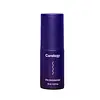What's inside
What's inside
 Key Ingredients
Key Ingredients

 Benefits
Benefits

 Concerns
Concerns

No concerns
 Ingredients Side-by-side
Ingredients Side-by-side

Water
Skin ConditioningDimethicone
EmollientGlycerin
HumectantPropanediol
SolventPolysilicone-11
Cetearyl Olivate
Butylene Glycol
Humectant1,2-Hexanediol
Skin ConditioningSodium Acrylate/Sodium Acryloyldimethyl Taurate Copolymer
Emulsion StabilisingSorbitan Olivate
EmulsifyingPolyisobutene
Carbomer
Emulsion StabilisingAminomethyl Propanol
BufferingCitric Acid
BufferingCaprylhydroxamic Acid
Disodium EDTA
Sodium Hyaluronate
HumectantDimethiconol
EmollientCaprylyl/Capryl Glucoside
CleansingDecyl Glucoside
CleansingWater, Dimethicone, Glycerin, Propanediol, Polysilicone-11, Cetearyl Olivate, Butylene Glycol, 1,2-Hexanediol, Sodium Acrylate/Sodium Acryloyldimethyl Taurate Copolymer, Sorbitan Olivate, Polyisobutene, Carbomer, Aminomethyl Propanol, Citric Acid, Caprylhydroxamic Acid, Disodium EDTA, Sodium Hyaluronate, Dimethiconol, Caprylyl/Capryl Glucoside, Decyl Glucoside
Water
Skin ConditioningGlycerin
HumectantOctyldodecyl Stearoyl Stearate
EmollientDimethicone
EmollientPentaerythrityl Tetraisostearate
EmollientIsostearyl Isostearate
EmollientCetyl Alcohol
EmollientHexyl Laurate
EmollientBis-Diglyceryl Polyacyladipate-2
EmollientPhytosterols
Skin ConditioningPhytosteryl/Isostearyl/Cetyl/Stearyl/Behenyl Dimer Dilinoleate
Skin ConditioningSodium Acrylate/Sodium Acryloyldimethyl Taurate Copolymer
Emulsion StabilisingPalmitoyl Tetrapeptide-10
Skin ConditioningPolyisobutene
Butylene Glycol
HumectantCitrus Junos Fruit Extract
Skin ConditioningXanthan Gum
EmulsifyingPullulan
Sodium Stearoyl Glutamate
CleansingOenothera Biennis Oil
EmollientOleic/Linoleic/Linolenic Polyglycerides
EmollientPhenoxyethanol
PreservativeEthylhexylglycerin
Skin ConditioningCaprylyl/Capryl Glucoside
CleansingCitric Acid
BufferingCaprylic/Capric Triglyceride
MaskingCetyl Palmitate
EmollientSorbitan Stearate
EmulsifyingPolysorbate 80
EmulsifyingTocopherol
AntioxidantSodium Benzoate
MaskingHydrogenated Lecithin
EmulsifyingWater, Glycerin, Octyldodecyl Stearoyl Stearate, Dimethicone, Pentaerythrityl Tetraisostearate, Isostearyl Isostearate, Cetyl Alcohol, Hexyl Laurate, Bis-Diglyceryl Polyacyladipate-2, Phytosterols, Phytosteryl/Isostearyl/Cetyl/Stearyl/Behenyl Dimer Dilinoleate, Sodium Acrylate/Sodium Acryloyldimethyl Taurate Copolymer, Palmitoyl Tetrapeptide-10, Polyisobutene, Butylene Glycol, Citrus Junos Fruit Extract, Xanthan Gum, Pullulan, Sodium Stearoyl Glutamate, Oenothera Biennis Oil, Oleic/Linoleic/Linolenic Polyglycerides, Phenoxyethanol, Ethylhexylglycerin, Caprylyl/Capryl Glucoside, Citric Acid, Caprylic/Capric Triglyceride, Cetyl Palmitate, Sorbitan Stearate, Polysorbate 80, Tocopherol, Sodium Benzoate, Hydrogenated Lecithin
Ingredients Explained
These ingredients are found in both products.
Ingredients higher up in an ingredient list are typically present in a larger amount.
Butylene Glycol (or BG) is used within cosmetic products for a few different reasons:
Overall, Butylene Glycol is a safe and well-rounded ingredient that works well with other ingredients.
Though this ingredient works well with most skin types, some people with sensitive skin may experience a reaction such as allergic rashes, closed comedones, or itchiness.
Learn more about Butylene GlycolCaprylyl/Capryl Glucoside is an alkyl glucoside. This just means it is creating by reacting alcohol and sugar. It is a cleansing and foaming ingredient.
Caprylyl/Capryl Glucoside helps remove the dirt, oil, and other pollutants from your skin.
Citric Acid is an alpha hydroxy acid (AHA) naturally found in citrus fruits like oranges, lemons, and limes.
Like other AHAs, citric acid can exfoliate skin by breaking down the bonds that hold dead skin cells together. This helps reveal smoother and brighter skin underneath.
However, this exfoliating effect only happens at high concentrations (20%) which can be hard to find in cosmetic products.
Due to this, citric acid is usually included in small amounts as a pH adjuster. This helps keep products slightly more acidic and compatible with skin's natural pH.
In skincare formulas, citric acid can:
While it can provide some skin benefits, research shows lactic acid and glycolic acid are generally more effective and less irritating exfoliants.
Most citric acid used in skincare today is made by fermenting sugars (usually from molasses). This synthetic version is identical to the natural citrus form but easier to stabilize and use in formulations.
Read more about some other popular AHA's here:
Learn more about Citric AcidDimethicone is a type of synthetic silicone created from natural materials such as quartz.
What it does:
Dimethicone comes in different viscosities:
Depending on the viscosity, dimethicone has different properties.
Ingredients lists don't always show which type is used, so we recommend reaching out to the brand if you have questions about the viscosity.
This ingredient is unlikely to cause irritation because it does not get absorbed into skin. However, people with silicone allergies should be careful about using this ingredient.
Note: Dimethicone may contribute to pilling. This is because it is not oil or water soluble, so pilling may occur when layered with products. When mixed with heavy oils in a formula, the outcome is also quite greasy.
Learn more about DimethiconeGlycerin is already naturally found in your skin. It helps moisturize and protect your skin.
A study from 2016 found glycerin to be more effective as a humectant than AHAs and hyaluronic acid.
As a humectant, it helps the skin stay hydrated by pulling moisture to your skin. The low molecular weight of glycerin allows it to pull moisture into the deeper layers of your skin.
Hydrated skin improves your skin barrier; Your skin barrier helps protect against irritants and bacteria.
Glycerin has also been found to have antimicrobial and antiviral properties. Due to these properties, glycerin is often used in wound and burn treatments.
In cosmetics, glycerin is usually derived from plants such as soybean or palm. However, it can also be sourced from animals, such as tallow or animal fat.
This ingredient is organic, colorless, odorless, and non-toxic.
Glycerin is the name for this ingredient in American English. British English uses Glycerol/Glycerine.
Learn more about GlycerinPolyisobutene is a synthetic polymer made from isobutene.
It is a film-forming agent and helps bind ingredients together.
Polyisobutene is not absorbed by the skin.
Learn more about PolyisobuteneThis long ingredient is a copolymer of sodium acrylate and sodium acryloyldimethyl taurate monomers.
It is used to help stabilize other ingredients and create a thicker gel-like texture.
Emulsifiers prevent oils and waters from separating.
Learn more about Sodium Acrylate/Sodium Acryloyldimethyl Taurate CopolymerWater. It's the most common cosmetic ingredient of all. You'll usually see it at the top of ingredient lists, meaning that it makes up the largest part of the product.
So why is it so popular? Water most often acts as a solvent - this means that it helps dissolve other ingredients into the formulation.
You'll also recognize water as that liquid we all need to stay alive. If you see this, drink a glass of water. Stay hydrated!
Learn more about Water